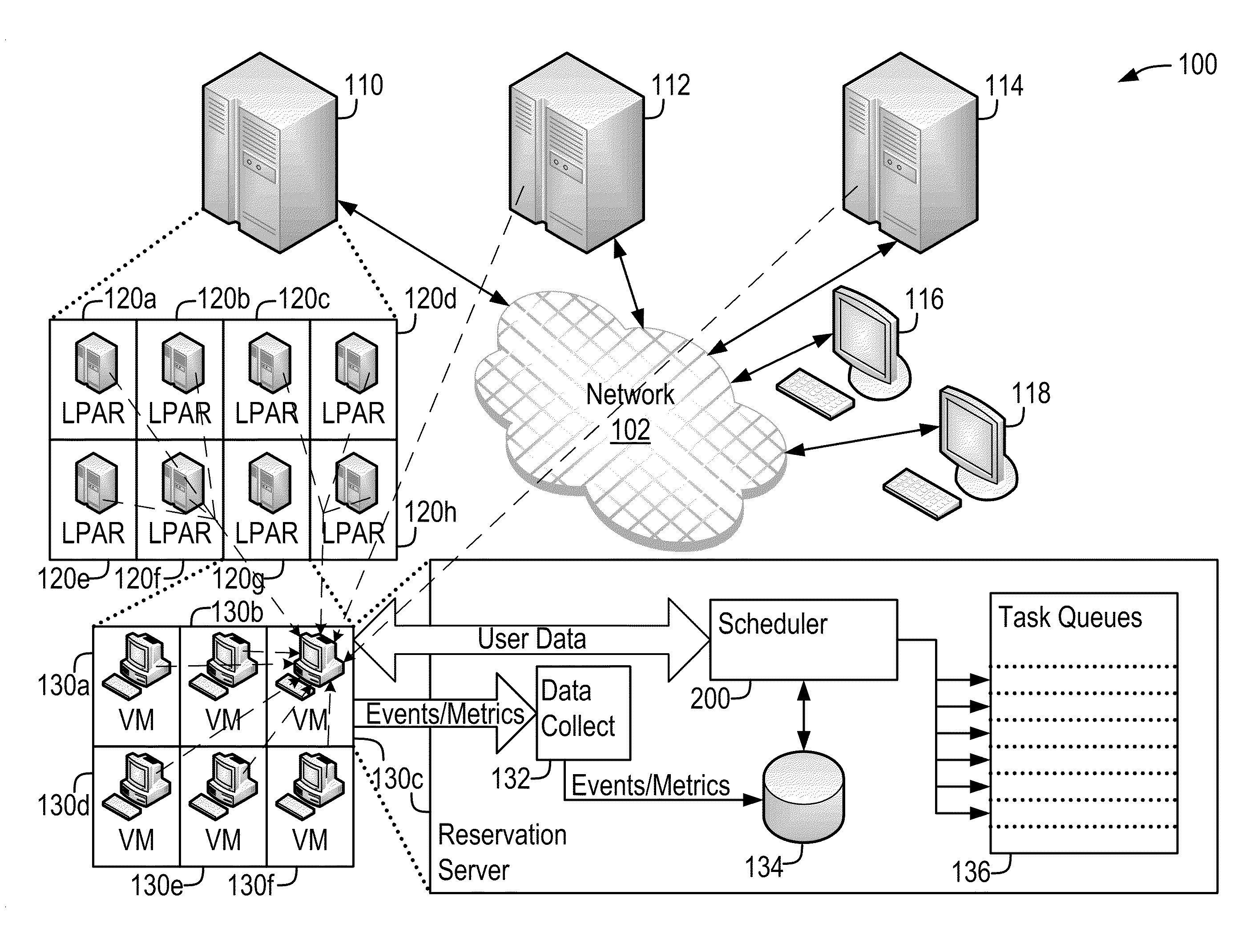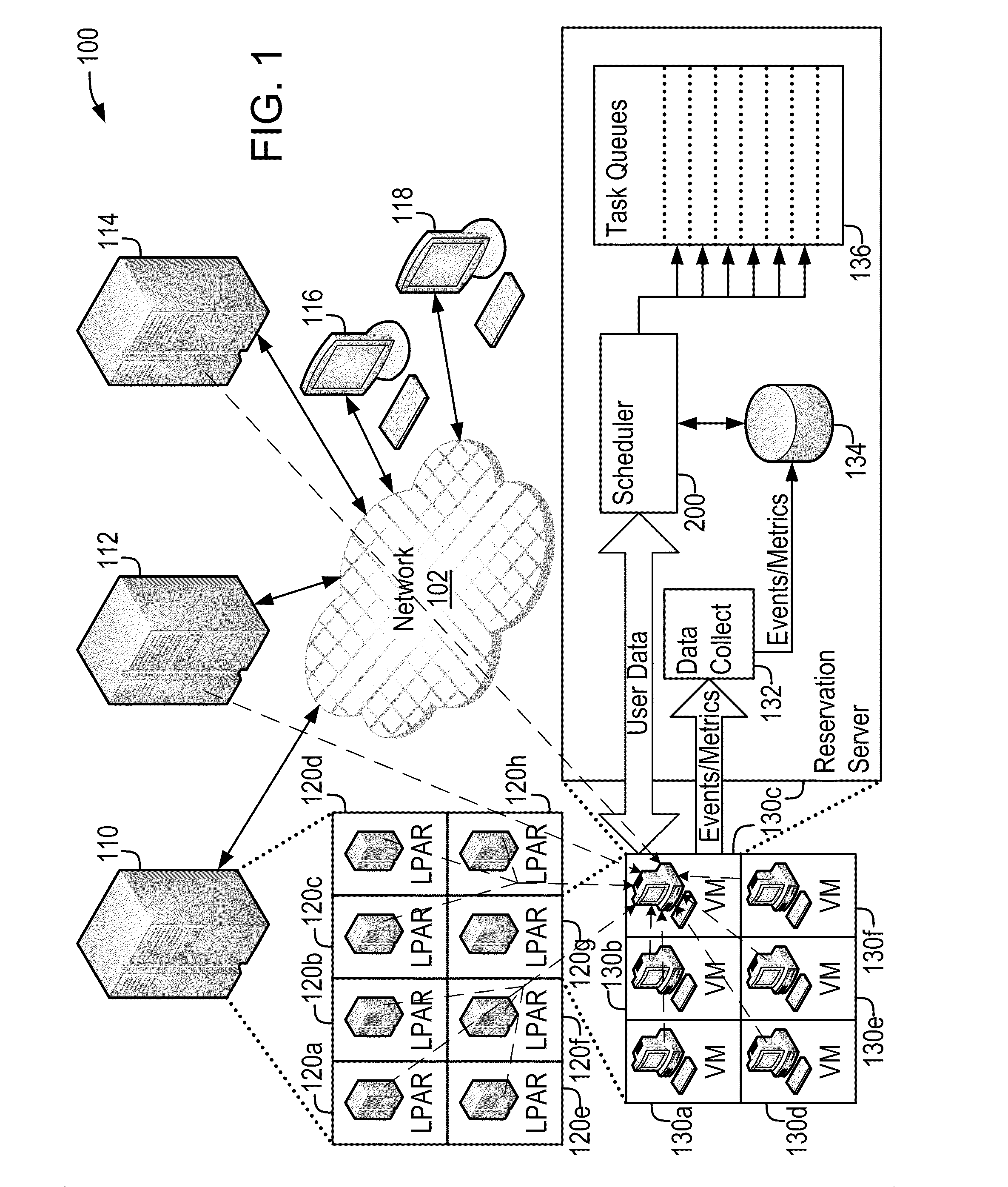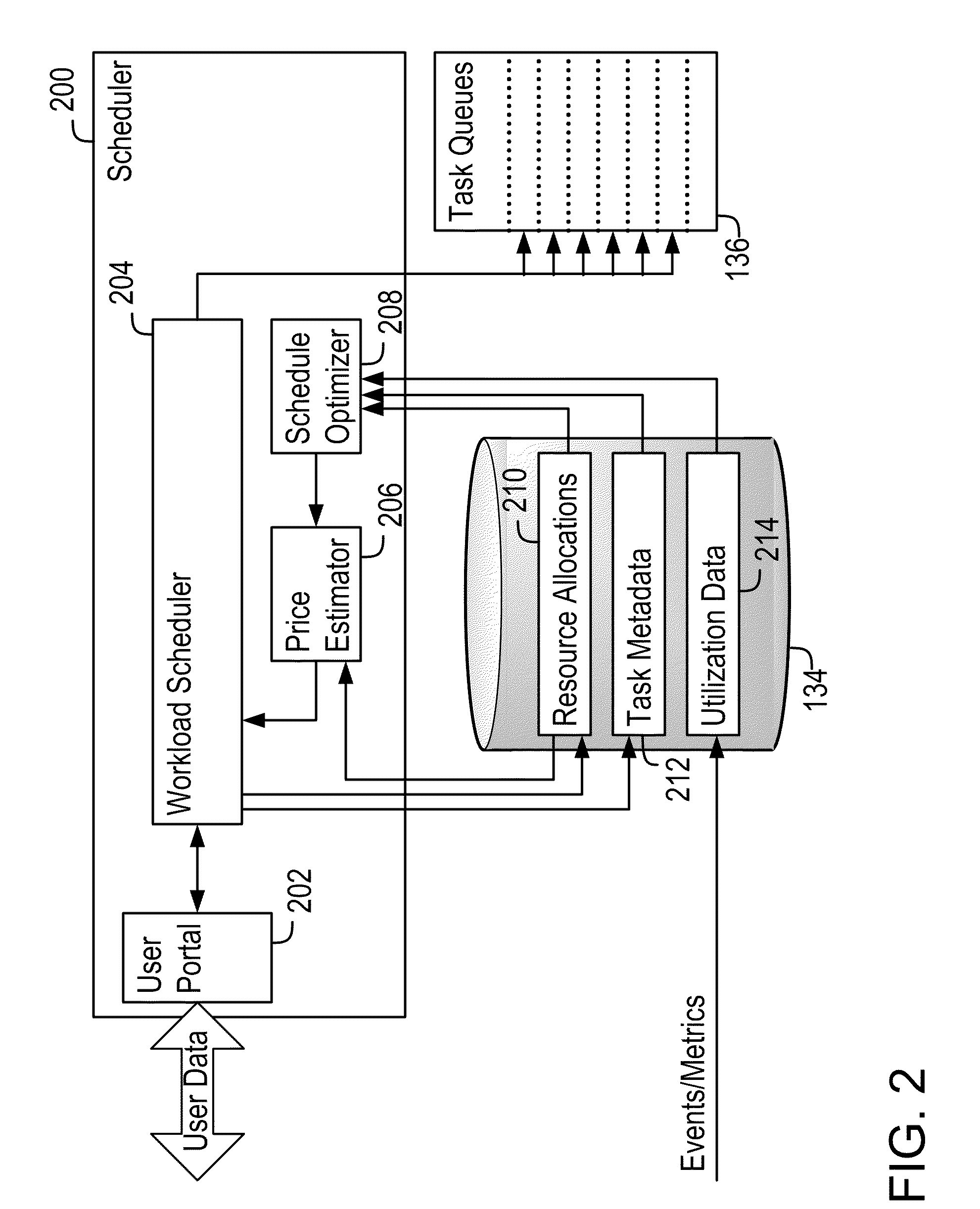Demand-Driven Workload Scheduling Optimization on Shared Computing Resources
a workload scheduling and shared computing technology, applied in the direction of multi-programming arrangements, program control, instruments, etc., can solve the problems of resource scheduling problems being overshadowed, valuable resources may go unused, and most computer systems will have peak load times, so as to reduce the cost of executing tasks, encourage task scheduling, and discourage system users
- Summary
- Abstract
- Description
- Claims
- Application Information
AI Technical Summary
Benefits of technology
Problems solved by technology
Method used
Image
Examples
Embodiment Construction
[0018]The present disclosure describes systems and methods that implement a demand-driven workload scheduling optimization of shared resources used to execute tasks submitted to a computer system. These methods further implement scheduling tasks designed to optimize prices offered for new workloads in a resource-constrained environment. This optimization results in the demand-optimized use of the resources of the computer system. The scheduled tasks may include, for example, any of a variety of software programs that execute individually, separately and / or in conjunction with each other, and may be submitted as executable images, as command language scripts and / or as job control images that control the execution of one or more software programs.
[0019]In the interest of clarity, not all features of an actual implementation are described in the present disclosure. It will of course be appreciated that in the development of any such actual implementation (as in any development project)...
PUM
 Login to View More
Login to View More Abstract
Description
Claims
Application Information
 Login to View More
Login to View More - R&D
- Intellectual Property
- Life Sciences
- Materials
- Tech Scout
- Unparalleled Data Quality
- Higher Quality Content
- 60% Fewer Hallucinations
Browse by: Latest US Patents, China's latest patents, Technical Efficacy Thesaurus, Application Domain, Technology Topic, Popular Technical Reports.
© 2025 PatSnap. All rights reserved.Legal|Privacy policy|Modern Slavery Act Transparency Statement|Sitemap|About US| Contact US: help@patsnap.com



